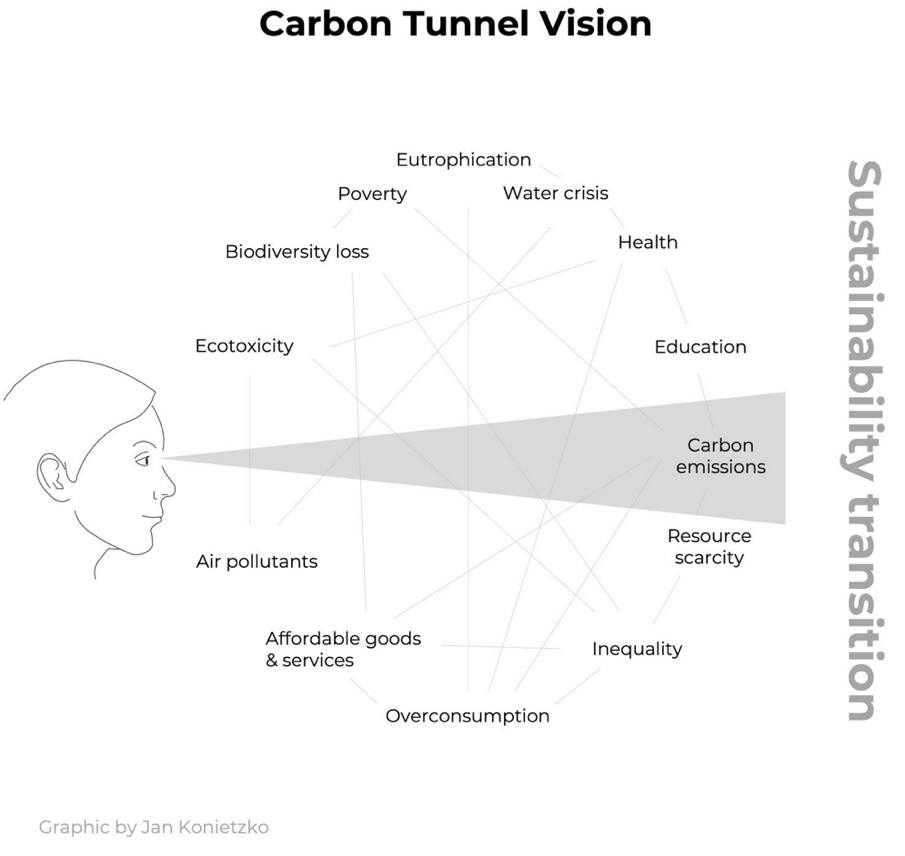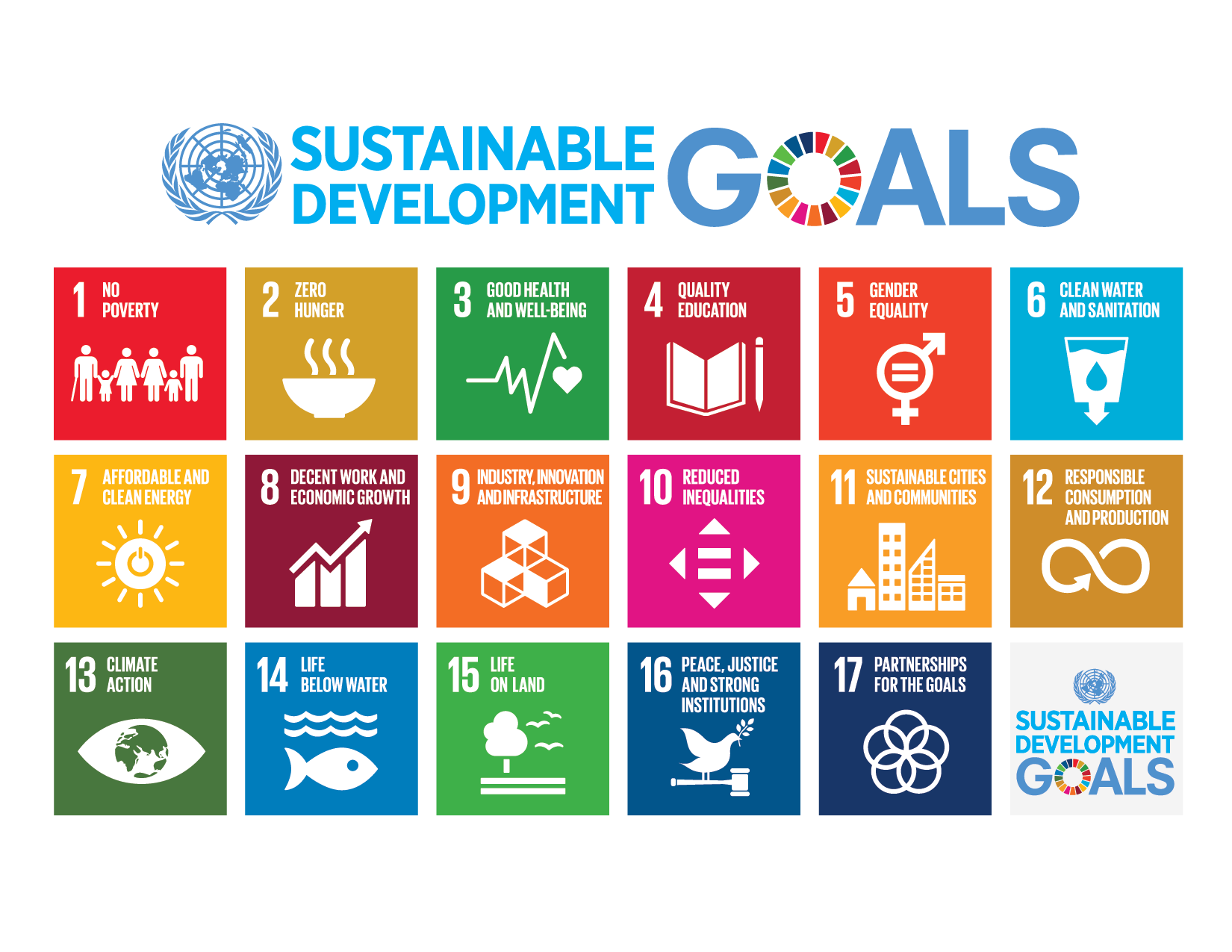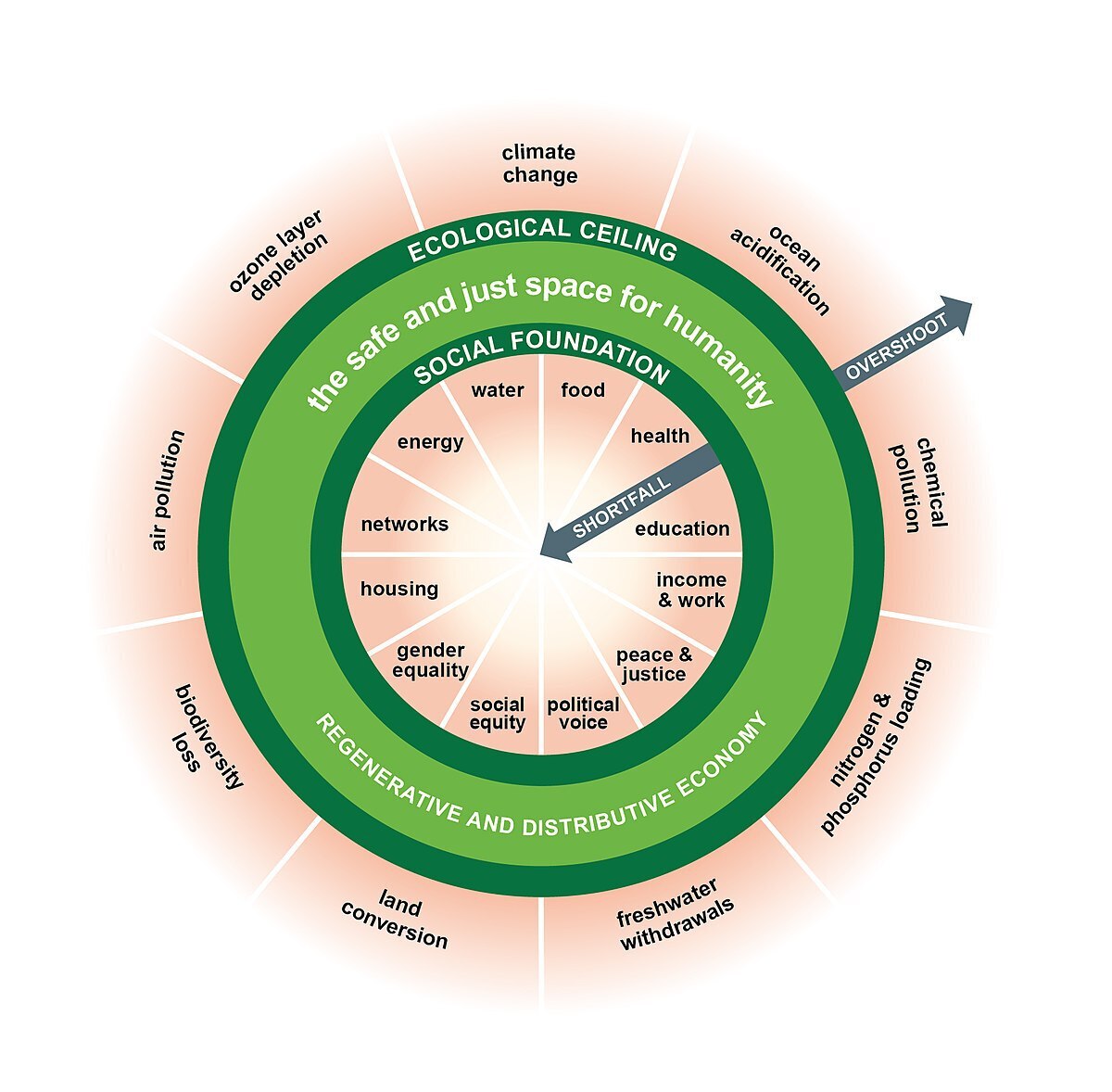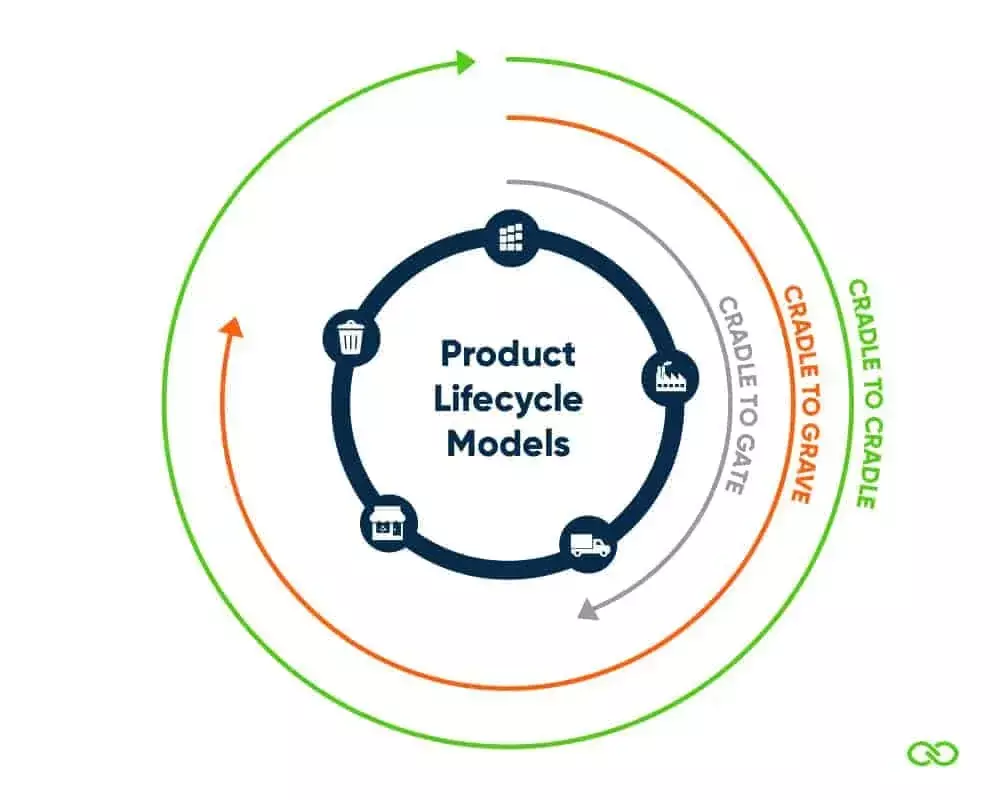
9 December 2025
Niki de Schryver from COSH!: Fast fashion harms circular goals
- Press
Greenwashing has many victims. Not only do greenwashing claims mislead consumers, but they also misinform professionals working in the fashion industry. Besides it also makes it harder for the fashion industry to actually become greener and to tell the full story regarding sustainability. So how do you make sure you’re not contributing to greenwashing practices as a retailer or other professional in the fashion sector?
When greenwashing, companies (intentionally or unintentionally) make themselves come across as greener or more sustainable than they actually are. They can do this by making false or incomplete claims, unsupported by evidence. Or by simply leaving out crucial parts of information and zooming in on the little sustainable activities that they do, like using recycled packaging or launching a sustainable collection while still overproducing (the unsustainable clothing).
In order to combat greenwashing, it’s important to know what real “green” fashion is. There is a big overlap between sustainable fashion and circular fashion (or circular economy). But circular fashion goes a bit further in the sense that it focuses on resource cycles and also takes into account the design phase, user phase, and what happens at the end of life of the garment.
Sustainability is most related to people and the planet, how the product is manufactured and how it contributes to sustainable life on earth, as well as the durability of a product. Though in reality, suppliers and brands often only refer to sustainability in the context of the impact on the planet.
Both terms share the same visions and theories but there is a different nuance.
Circularity in the fashion industry means that every part of the life cycle of a garment is cyclical and that there are as few residual material outflows as possible. In a circular economy raw materials, components and products keep as much value as possible, renewable energy sources are used and systematic thinking is key.
According to the Ellen MacArthur Foundation: “A circular economy for fashion creates better products and services for customers, contributes to a resilient and thriving fashion industry, and regenerates the environment. It prioritizes the rights and equity of everyone involved in the fashion industry, and will create new opportunities for growth that are distributed, diverse, and inclusive.”
“If we really want to save this beautiful planet, future generations of all species including ourselves, our livelihoods and those of future generations, we must place earth first.” Kate Fletcher and Mathilda Tham write in theEarth Logic Fashion Action Research Plan (2021) in which they: “propose planet before industry as a radical idea in which the health and survival of our planet earth is given precedence over business interests.” This is our time to change the fashion industry from within.

There’s a lot of greenwashing about sustainability and the circular economy in the fashion industry. Generally, the emphasis is limited to the use of materials and their “impact” on the environment, part of which is hidden. Let’s avoid a tunnel vision on carbon emissions reduction only!
Circularity is not at all limited to materials, there are also socio-economic factors that play (and should play) a major role in the transition towards a global circular and sustainable economy. The Great Green Washing Machine reports (part 1 and part 2), written by Veronica Bates Kassatly and Dorothee Baumann-Pauly take a deep dive into greenwashing within the fashion industry itself. COSH! read these reports and we’d like to share with you some of the key takeaways of the reports, adding some of our own experiences and examples as well.

As stated above, social factors are often overlooked in sustainability. And on top of that, the Global North often fails to consider the opinions and unique factors impacting the people of the Global South. The Great Green Washing Machine report part 1 recommends that the socio-economic impacts of fiber production in producer countries need to be assessed and that regulatory frameworks must include living wages for both factory workers and farmers globally.
In 2015 the United Nations General Assembly defined 17 interlinked Sustainable Development Goals (SDGs). These were designed to be a “blueprint to achieve a better and more sustainable future for all” and are set to be achieved by 2030. However, the Great Green Washing Machine report argues that in fashion, “far from prioritizing the needs of the global poor, in fashion, sustainability appears to have become an elitist, even imperialistic concept in which the interests of the global north define the conversation.”
Often fashion companies take some of the SDGs they are able to relate to, and reframe them in a different context, while they’re not actually contributing to the overall goal of meeting the essential needs of the world’s poor. It’s important for the fashion industry to recognize this priority in order to sustain life and business on earth.
However, to be able to set up and maintain a circular economy, we need to let go of the current, linear growth-oriented economic system. So greenwashing a brand’s sustainability by launching (extra) “sustainable collections” won’t fix the issue. It’s essential to create fewer clothes and maintain business on earth instead of outgrowing it. The “doughnut economics”, a compass for a new economy of the 21st century by Kate Raworth provides us with insight into this topic.
At the moment, the Global South is suffering from the “growth” the Global North is pushing for, while they aren’t responsible for the great pollution numbers. To illustrate, Ali Bongo Ondimba, President of Gabon stated: “Africa contributed just 3% of global emissions, yet we are the continent which … is already paying the biggest price.”

That’s why in the middle rings of Raworth’s so-called doughnut, the rights of all humanity are in the center. Currently, the system exploits people who have almost no alternatives, their only option is to work in a clothing factory in poor working conditions.
Another issue is that pressures are created all down the supply chain on prices, and flexibility. “Brands are under pressure from consumers’ needs, and competition from other brands”, Raworth says. This creates a growing necessity to produce faster and cheaper.
Raworth also calls us to consider what gives us well-being. She claims that shopping is not a source of fulfillment, but connection, creativity, and so on are. But nobody’s advertising that. Striving for permanent growth will undermine our welfare, she says.
That’s why we also need to reevaluate the value of clothes and gain back our connection with them. It’s imperative to become aware of the true cost and intensive labor that goes into fashion and choose to produce and buy high-quality garments in order to build that connection over time as it makes the clothing last longer.
Because of the partly false Life Cycle Analyses (LCAs) that have been conducted in the past and are now circulating, there’s an incorrect and greenwashed idea of what is sustainable in the fashion industry. This is problematic as many organizations including suppliers, brands, and governments base their sustainability choices on this incorrect information.
An example of such a commonly used index for materials is the Higg Materials Sustainability Index (Higg MSI). This tool was developed by the Sustainable Apparel Coalition (SAC) to give the industry a standardized measurement of the environmental impacts of different textile types in the manufacture of clothing. It includes data on the Global Warming Potential, Nutrient Pollution in Water (Eutrophication), Water Scarcity, Fossil Fuel Depletion and Chemistry.
The SAC and this index was initiated by Patagonia along with other major fast fashion and athleisure brands like Nike and are currently funded, trusted and used by many big corporations like H&M Group (H&M, Weekday, Arket, etc.), C&A, De Bijenkorf, Eileen Fisher, G‑Star, Guess, ASOS, Zalando, Inditex (Zara, Massimo Dutti, Bershka etc.), Mango, M&S, Nike, Adidas, Patagonia, NEXT, Tesco, WE and Zalando among many other of the largest retail brands. Needless to say it’s the lobby of the large retail chains. Some of these companies base their communication on their sustainability of of this information. However, recently the Higg Index has been under fire for greenwashing and spreading false information.
That’s why the Norwegian Consumer Authority now bans Higg-backed marketing claims (Source: Apparal Insider) and is imposing sanctions on the SAC. The Norwegian Consumer Authority also states they warned H&M. The New York Times also came out with a critical article about the Higg Index, stating that “It strongly favors synthetic materials made from fossil fuels over natural ones like cotton, wool or leather.”
Higg MSI is a tool developed by the textile industry to give the industry a standardized measurement of the environmental impacts of different textile types in the manufacture of clothing. The tool is owned and developed by the American organization SAC (Sustainable Apparel Coalition), an organization for the clothing and footwear industry.

First and foremost, often they only focus on a specific topic of sustainability. For example on the reduced water use or a little lower carbon footprint. While there are actually a lot more factors at play when producing a garment. Therefore it creates a wrong idea of what’s really sustainable, as it focuses only on the small part of it.
Secondly, currently, there are no LCA studies that include social factors and the full life cycle of garments and they fail to consider the opinions and unique factors impacting the people of the Global South. Hence there’s crucial information that’s missing in the LCA’s and it negatively impacts farmers whose materials come out of the studies as harmful according to the Great Greenwashing Machine Report part 2.
Thirdly, the current LCA’s also don’t differentiate based on the part of the world and climate it’s conducted in. That’s why the results of these studies aren’t applicable to all sorts of the same textile fibers and their production sites, while they are presented like that.

To make the textile sector more circular, governments, organizations, and businesses are drawing up regulations both at local, national and European levels.
Europe aims to have a circular economy by 2050 and by “2030 textile products placed on the EU market will be long-lived and recyclable, made as much as possible of recycled fibers and free of hazardous substances” (Source: European Commission). In order to achieve that, the European Commission is coming up with several initiatives, such as a ban on greenwashing to protect consumer rights and to be able to correctly inform them. Besides the European Commission also proposed a Product Environmental Footprint (PEF) to measure environmental performance and a European Digital Product Passport (DPP) to increase transparency.
In the Netherlands, an EPR (extended producer responsibility) for the textile sector will be initiated in 2023. This means that clothing producers, importers, and webshops will be held responsible for the collection, processing, and recycling of discarded textiles.
The FOD Economie of Belgium conducts inspections and can impose sanctions on greenwashing brands on the Belgian market. They define 10 ways in which a brand can be accused of greenwashing with their environmental claims:
1. A pure lie/incorrect information.
2. Information that is not believable.
3. A disproportionate promise.
4. Vague, imprecise, ambiguous, absolute words and terms, which are not clearly defined in the message.
5. Insufficient or missing relevant information.
6. A misleading visual image/presentation.
7. A pseudo-label/logo.
8. Highlighting an irrelevant action.
9. False exclusivity.
10. No evidence.
Don’t want to get accused of greenwashing? More information on the FOD’s initiative will be explained in a later blogpost on COSH!, for now you can read the full guide by FOD Economie here.
The introduction of legislation is a good evolution because regulation can enable change on a big scale. Since big brands won’t have any other choice than to implement it this way. Although it is important that these regulations or legislations are based on reliable information in order to make a meaningful change.
But change needs to come from all actors. In addition to initiatives from governments and organizations, there should also be a movement of change coming from both fashion entrepreneurs and consumers! Raworth: “We need to take investments out of the old economic model and invest them in a new, regenerative and distributive economy.” She also says: “When we set our minds to it, we can use these material sources over and over again. Then never run out of them.”

With circularity in mind, at COSH! we not only consider the origin of the raw materials but also how you can reuse, recycle, or process them after use. Through eco-design, the entire life cycle of the product is thought through beforehand. Think cradle-to-cradle (and not cradle-to-gate or cradle-to-grave) and look at how to make the best use of residual streams.
Although recycled polyester clothes may seem circular because they’re made from resources that are already here. The afterlife of these clothes also needs to be taken into account when analyzing the lifecycle of the product.
Example: This means that recycled polyester, with today’s knowledge, is not considered a 100% circular material at COSH! Because at present there is (almost) no fiber-to-fiber recycling of polyester and it is only obtained from recycled PET bottles. Once the bottles are processed into a textile for clothing or lifestyle products, they are not recyclable again, whereas in the beverage industry it could be used again and again (Source: The Great Green Washing Machine 2021).
The entering of the end-of-life phase of a garment should first be postponed as long as possible (e.g. by improving quality and offering repair services) and can then be extended by reuse, upcycling, recycling, and finally waste incineration/composting. By designing cradle-to-cradle we can prevent the massive clothing mountains we know today.
Something to be aware of is that this story isn’t black and white. Sustainable fashion is still a grey area in which discussion and research are in progress. After all, change can’t happen overnight. But every step in the right direction is one we can all learn from and applaud.
Nonetheless, we need to ensure no greenwashing is used to falsely promote the current positive points. The things that aren’t yet perfect also need to be highlighted too. “Promises for the future are meaningless if not backed by a detailed action plan and monitoring system.”Says Niki de Schryver, founder of COSH! Conscious Shopping Made Easy.
Most of all, the acknowledgment of the interconnectedness of sustainable themes, the creation of a fair and slow fashion business model, and honesty are crucial in preventing greenwashing. Be careful and critical of the environmental and ethical claims a supplier, organization, brand, or store makes. Ask questions and see if they’re trying to hide their flaws by zooming in on the (little) green things they do. Please consider how the brand is contributing to the overall scheme of sustainability.
At COSH! we aim to bring the sustainable stories of retailers and brands that run a truly eco-friendly and ethical businesses to the surface for consumers to discover, enabling them to make more conscious shopping choices. This way we aim to raise awareness and help simplify the transition towards a circular and local thriving economy that is also contributing to the global South.
Want to stay up to date with the latest publications? Sign up for our newsletter or read more on how we look at materials: